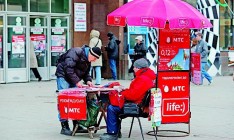Technology
Mobile communicationsMTS Ukraine no longer has the right to operate in Crimea

Starting from today, the once largest mobile operator of Crimea – MTS Ukraine – will be operating in a “reduced” format on the peninsula. In order to use its services, a subscriber needs to choose the Trimob network on their phone. This is the only partner of the company that currently allows MTS Ukraine SIM cards to operate in its 3G network on conditions of roaming. “Only subscribers who have phones that support UMTS (3G) technology will be able to use it,” emphasized spokesperson of the operator Viktoria Pavlovska. SIM cards in old 2G phones will not work.
MTS failed to extend its roaming contract with the first Russian mobile operator on the peninsula K-Telecom (TM Win Mobile). As a reminder, the Russian company launched a broad 2G (GSM) network in August at about the same time when the operation of the MTS Ukraine network was suspended.
Now, the services of MTS on the peninsula will not be available everywhere as Trimob covers mainly cities and the coastline. There will be practically no communication in rural areas. As Pavlovska informed yesterday, subscribers in Sevastopol will also be cut off from communication as Trimob does not operate in the city.
Ukrtelecom, the mother company of the 3G operator, recently had a conflict with the local authorities of the city, which ended with the local authorities taking control of the company’s infrastructure.
Representative of the Department of Information Policy and Resources in Sevastopol Serhiy Horbachev assured Capital that the vast majority of Sevastopol residents already purchased new SIM cards offered by Win Mobile and used MTS Ukraine mostly for communicating with relatives in Ukraine.
Win Mobile replaced MTS
As it turned out, K-Telecom is not only a clone of MTS Ukraine from the technical standpoint (based on the coverage of the cellular network). The chain of retail outlets and dealerships of Win Mobile in Crimea published recently on its website strongly resembles the old retail chain of MTS Ukraine.
“We rented the premises for Crimean shops. The owners unilaterally severed lease agreements with us after certain events transpired,” says Pavlovska. Another interlocutor of Capital on the telecom market assumes that the new operator agreed on the lease in places that the subscribers have grown accustomed to.
Statistics of the increase and decrease of the subscriber base of MTS Ukraine and Win Mobile is also undergoing a strange transformation. In April, iKS Consulting published a report according to which MTS controlled 57% of the market in Crimea. This accounted for around 1.7 mn SIM cards. In September their number dropped to slightly over 1 mn. Yesterday, however, the operator informed that it has approximately 350,000 subscribers in Crimea. “These are active subscribers that use the services on a daily basis,” said Pavlovska. The total subscriber base is much larger, she says.
At that, according to the statements of Minister of Internal Policy, Information and Communications of Crimea Dmytro Polonskiy, Crimeans have already purchased more than 1.5 mn Win Mobile SIM cards. This statement was made at the beginning of August, which was literally several days after the launch of the Russian network.
life:) is still fighting
As a reminder, Kyivstar suspended its operation in Crimea in August. Astelit (life:)) has been experiencing serious difficulties in operation on the peninsula for nearly two weeks, although it is still active. Due to the disruptions on several stretches of the main fiber optical communication lines the base stations on the peninsula were completely cut off.
“The situation remains unstable: at the moment there is no coverage on the larger part of the peninsula. However, the technical team continues work on recovering communication,” informed Head of the PR Department of the operator Oksana Rudyuk. The company is planning to provide services to its subscribers on the peninsula for as long as external circumstances allow.
Communication of life:) in the region is currently unpredictable. Subscribers write on online forums that the network is functioning well in one part of the city, but is absent in the other part. “The operator managed to restore coverage, reaching up to 80% of the territory of Crimea,” says Rudyuk. After that, this indicator dropped again.







 of the agreement of syndication with Financial Times Limited are strictly prohibited. Use of materials which refers to France-Presse, Reuters, Interfax-Ukraine, Ukrainian News, UNIAN agencies is strictly prohibited. Materials marked
of the agreement of syndication with Financial Times Limited are strictly prohibited. Use of materials which refers to France-Presse, Reuters, Interfax-Ukraine, Ukrainian News, UNIAN agencies is strictly prohibited. Materials marked  are published as advertisements.
are published as advertisements.